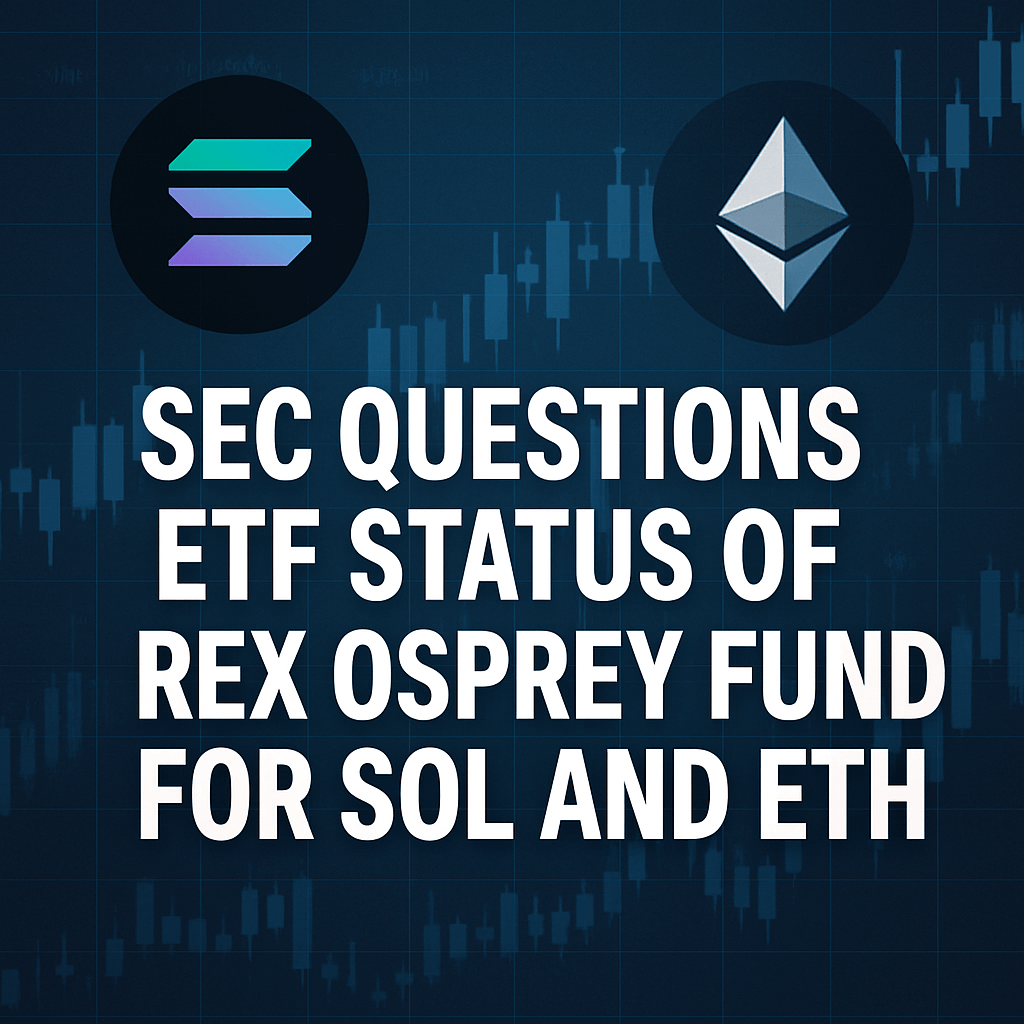SEC Questions ETF Status of REX-Osprey Funds for SOL and ETH


The U.S. Securities and Exchange Commission (SEC) has announced that the newly filed amendments regarding REX and Osprey’s proposed exchange-traded funds (ETFs) based on staked Solana (SOL) and Ethereum (ETH) may not satisfy the criteria required to qualify as ETFs. This development follows the effective registration amendments submitted by the issuers in pursuit of regulatory approval.
Understanding the SEC’s Position
The SEC’s scrutiny comes amid an ongoing effort to regulate investment vehicles in the rapidly evolving cryptocurrency space. Specifically, the Commission is focused on ensuring that any financial products offered to the public adhere to stringent guidelines designed to protect investors and maintain market integrity.
According to SEC officials, the primary concern regarding staked funds revolves around the underlying assets’ inherent volatility, liquidity issues, and the degree to which they amenable to regulatory oversight. The SEC has historically maintained a cautious approach towards cryptocurrency ETFs, citing concerns over transparency and market manipulation.
Details of the Proposed ETFs
REX and Osprey’s proposal centers on offering a unique investment vehicle that allows smaller investors to gain exposure to staked SOL and ETH. The staked versions of these cryptocurrencies generate yield through network validation mechanisms. For Solana, this process involves validators securing the network by confirming transactions, while Ethereum’s shift to a proof-of-stake model also permits users to earn rewards for locking up their ETH as collateral.
Under normal circumstances, ETFs are designed to track the performance of the underlying assets closely. However, staking introduces additional layers of complexity due to the locking up of assets for varying periods, limiting liquidity. Such factors likely contribute to the SEC’s hesitation in granting these funds a favorable designation.
Market Reactions and Investment Sentiment
Following the SEC’s announcement, the cryptocurrency market experienced a notable reaction. Investors seeking exposure to institutional-grade products in the crypto space have shown increased interest in staked assets, but regulatory hurdles like this one could temporarily dampen enthusiasm. Market analysts suggest that while the SEC’s initial rulings may be stringent, they underscore the importance of regulatory clarity for the long-term growth of the sector.
- Market Volatility: Following the announcement, the prices of both SOL and ETH showed minor fluctuations, signaling investor sentiment remains sensitive to regulatory news.
- Future Proposals: Experts estimate that additional applications for crypto ETFs will continue to flood the SEC as firms adapt their strategies to meet emerging regulatory frameworks.
The Broader Implications for Crypto ETFs
This episode highlights a crucial juncture for the cryptocurrency industry regarding the acceptance of ETFs. The SEC’s rationale for potentially disqualifying staked SOL and ETH fund designs emphasizes the pressing need for clear regulatory standards in this nascent market. If successful, REX and Osprey may pave the way for the future of cryptocurrency ETFs, which could potentially revolutionize how investors interact with digital assets.
Industry experts remain optimistic that ongoing dialogue between crypto firms and regulators could lead to standardized guidelines that will address the SEC’s concerns regarding volatility, liquidity, and investor protections. As efforts to establish robust regulatory frameworks continue, it is evident that the push for cryptocurrency ETFs will remain a focal point of interest within the financial community.
Conclusion
In conclusion, while the SEC’s recent comments on the REX-Osprey proposal for staked SOL and ETH funds serve as a cautionary signal for the crypto investment landscape, they also highlight the critical phase of regulatory evolution underway. As institutions continue to seek legitimate pathways to invest in digital currencies, clarity and alignment with regulatory standards will be essential for both market stability and growth.